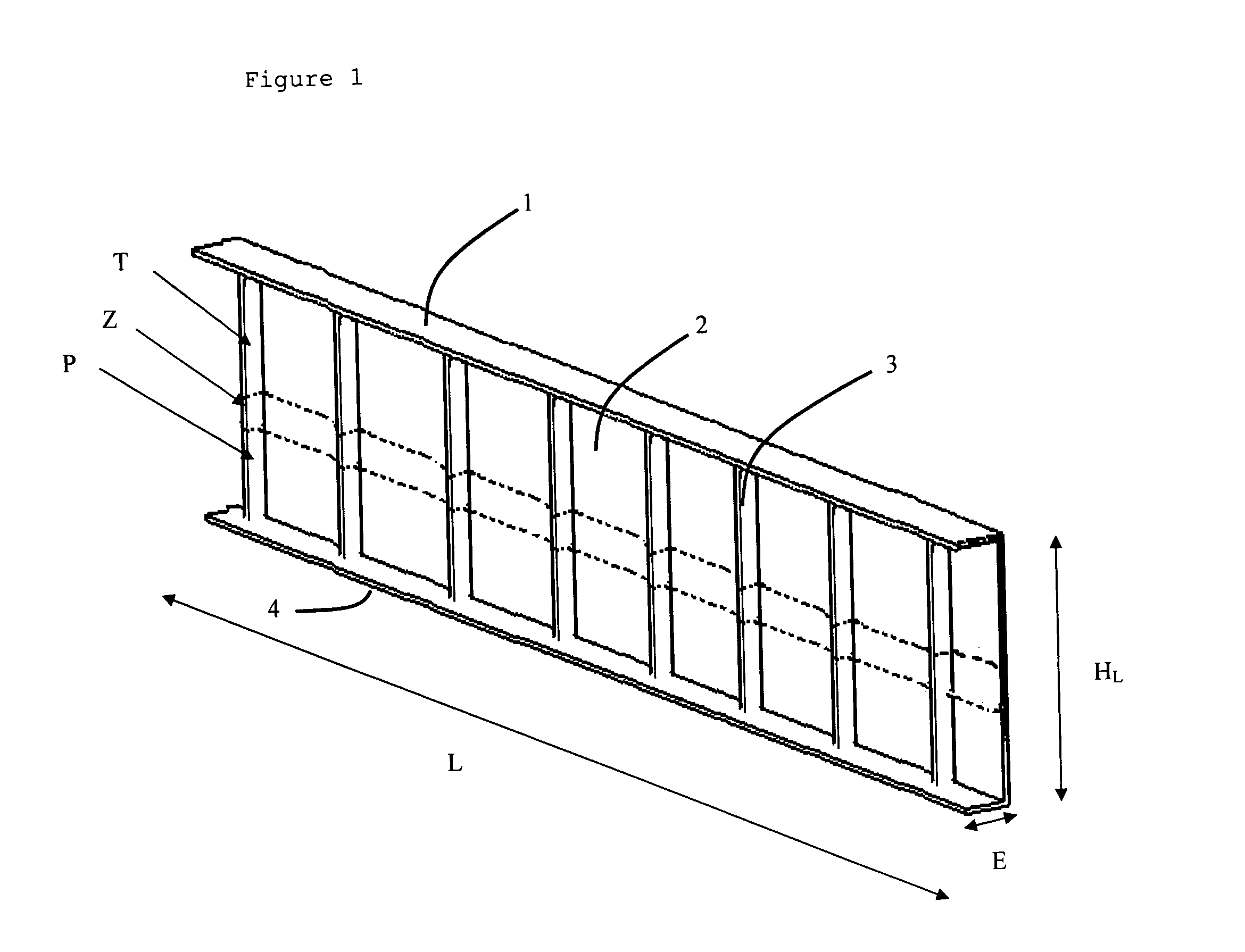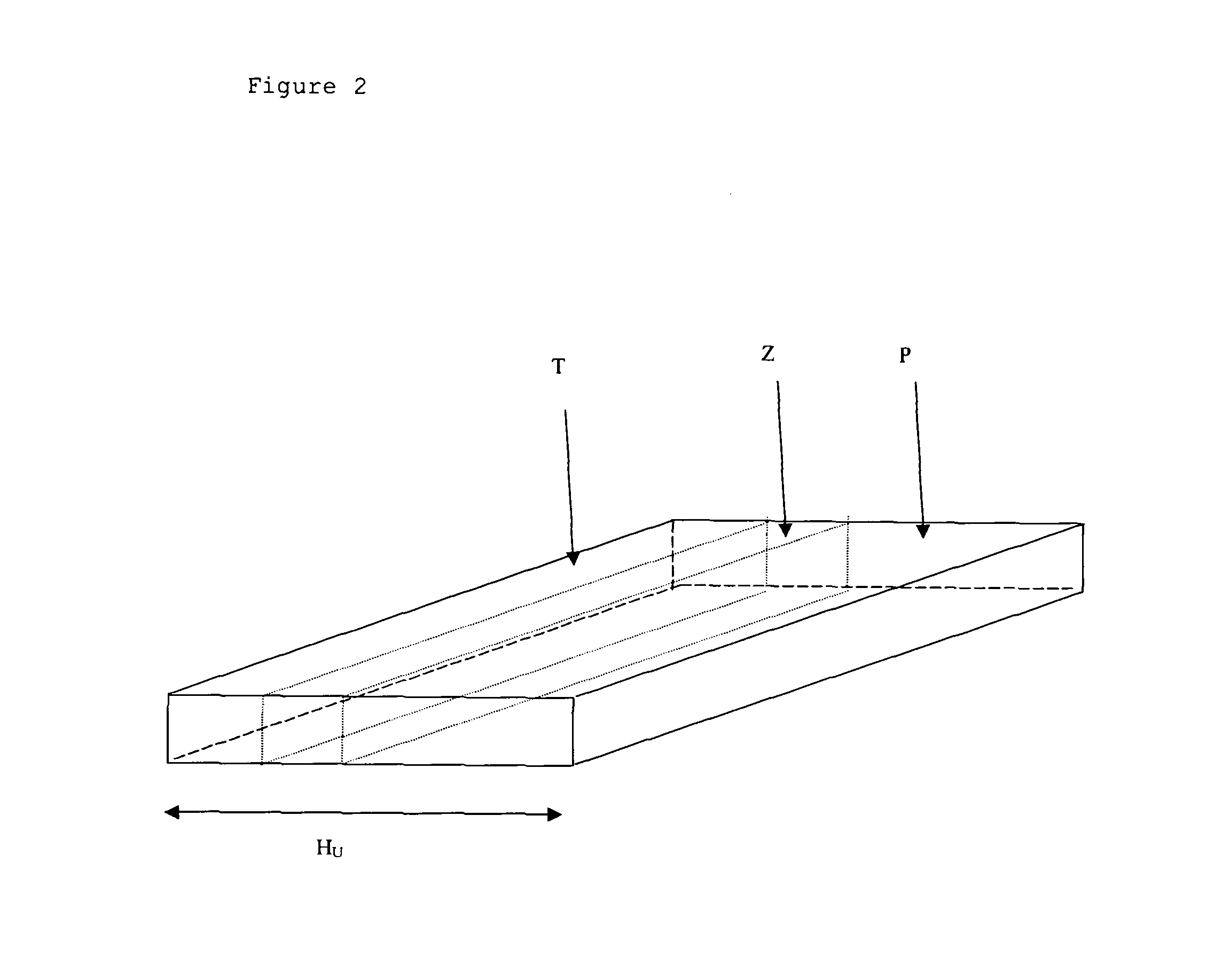Manufacturing process for semi-finished products containing two aluminum-based alloys
a technology of aluminum-based alloys and manufacturing processes, applied in metal extrusion, electrical equipment, metal rolling, etc., can solve the problems of increasing industrial difficulties with the size of parts, affecting etc., and achieves the effect of improving the quality of semi-finished products
- Summary
- Abstract
- Description
- Claims
- Application Information
AI Technical Summary
Benefits of technology
Problems solved by technology
Method used
Image
Examples
example 1
[0071]In this example, a rolling ingot was cast such that the bottom (mark P) is made of an Al−Zn 5%−Cu 1.8%−Mg 1.5% alloy and the top (mark T) is made of an Al−Zn 8%−Cu 1.8%−Mg 1.9% alloy. The two alloys were made in two separate furnaces. Table 1 indicates the composition of the two alloys measured on pins obtained by solidification of liquid metal drawn off in both furnaces.
[0072]
TABLE 1Measured compositions (% by weight)ReferenceZnCuMgSiFeTiZrA(P)4.931.831.480.0330.0530.01750.11A(T)8.051.851.890.0300.0440.02020.12
[0073]The two liquid alloys were treated with an Ar−Cl2 mix in an IRMA® type treatment ladle for 90 minutes. The transition between alloys was made in a transfer trough. Liquid metal was drawn off in the transfer trough to make spectrometric samples before, during and after transition of the composition every 50 mm of drop. It was thus found that the transition of the composition takes place over a drop height of about 200 mm. The height HP was 2100 mm, the height HT wa...
example 2
[0074]A slab was cast as described in example 1. The alloy compositions are given in table 2.
[0075]
TABLE 2Measured compositions (% by weight)ReferenceZnCuMgSiFeTiZrB(P)4.811.801.470.0350.0430.01840.11B(T)8.111.871.920.0310.0440.01900.11
[0076]The two liquid alloys were treated with an Ar−Cl2 mix in an ALPUR® type treatment ladle. The metal with composition T was prepared from the metal with composition P in an ALPUR® treatment ladle, and the treatment ladle was then supplied with liquid metal from the second furnace, so as to obtain a sudden transition. Liquid metal was drawn off in the transfer trough to make spectrometric samples before, during and after transition of the composition every about 50 mm of drop.
[0077]FIG. 6 illustrates the results obtained. The transition of the composition takes place over a drop height of at least 100 mm. The drop height HP was 2100 mm. The final height HF of the slab was about 3850 mm. A bottom length HEP of 800 mm and a top length HET of 300 mm w...
example 3
[0078]This example relates to the fabrication of a plate usable for the manufacture of an aircraft wing spar.
[0079]The slab derived in example 2 is used. The height HU of this slab is about 2750 mm, which is sufficient for a spar about 2000 mm long. The slab is homogenised at 470° C. for 48 hours. It is hot rolled in the transverse direction (i.e. perpendicular to the casting direction H of the slab) to a final thickness of 80 mm. The hot rolling temperature is between 400° C. and 460° C. The plate thus obtained is solution heat treated for 12 hours at 473° C. After quenching, the plate is subjected to controlled stretching with a permanent elongation of about 2%.
[0080]The plate obtained is then characterized by a conductivity measurement. FIG. 7 illustrates the conductivity profile obtained at mid-thickness in the casting direction H. The transition zone between alloys extends over a height of about 400 mm. This height is greater than the transition height of 100 mm measured by sam...
PUM
| Property | Measurement | Unit |
|---|---|---|
| temperature | aaaaa | aaaaa |
| temperature | aaaaa | aaaaa |
| thickness | aaaaa | aaaaa |
Abstract
Description
Claims
Application Information
 Login to View More
Login to View More - R&D
- Intellectual Property
- Life Sciences
- Materials
- Tech Scout
- Unparalleled Data Quality
- Higher Quality Content
- 60% Fewer Hallucinations
Browse by: Latest US Patents, China's latest patents, Technical Efficacy Thesaurus, Application Domain, Technology Topic, Popular Technical Reports.
© 2025 PatSnap. All rights reserved.Legal|Privacy policy|Modern Slavery Act Transparency Statement|Sitemap|About US| Contact US: help@patsnap.com



